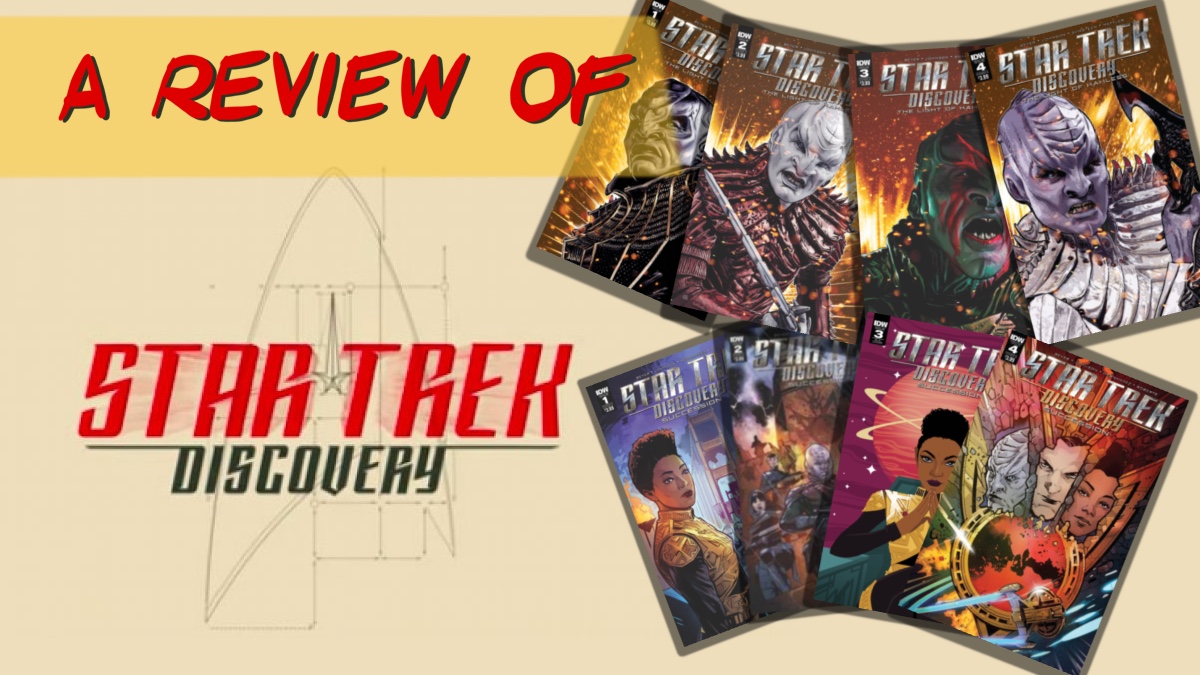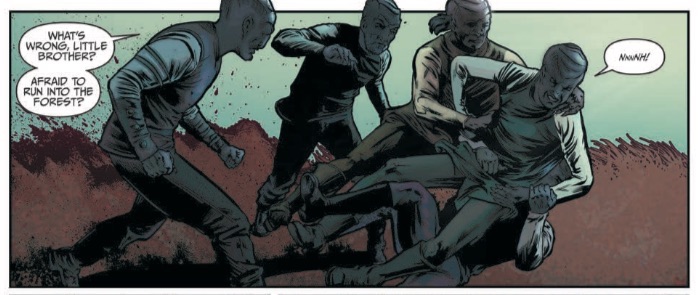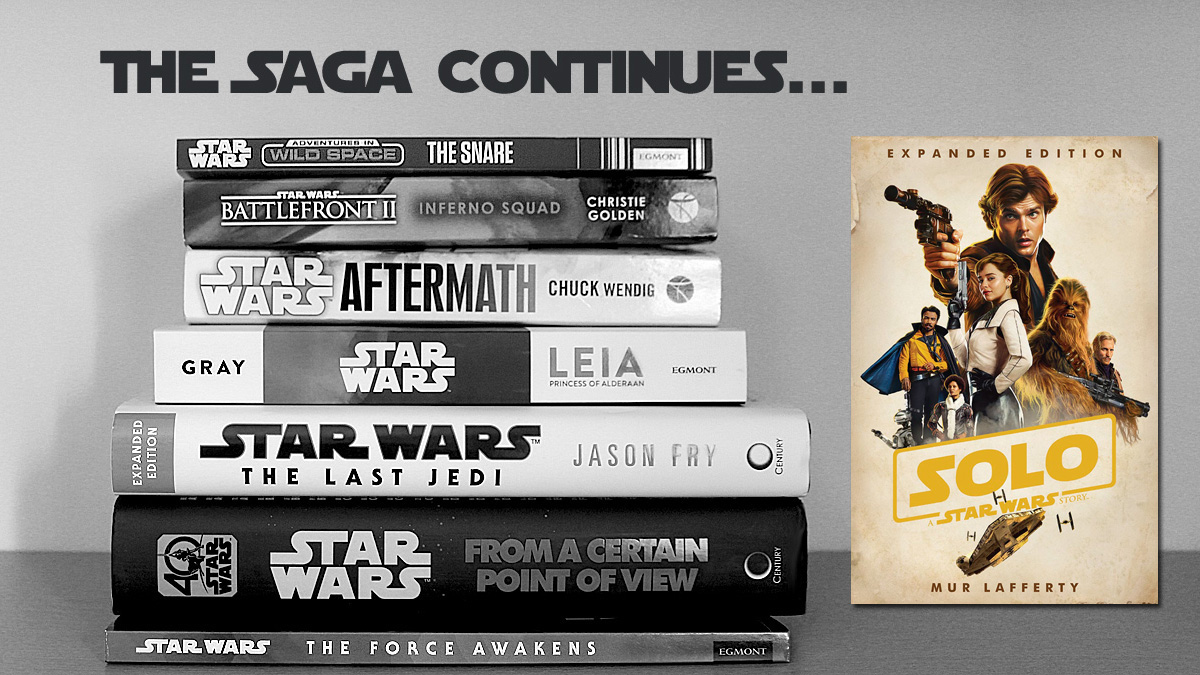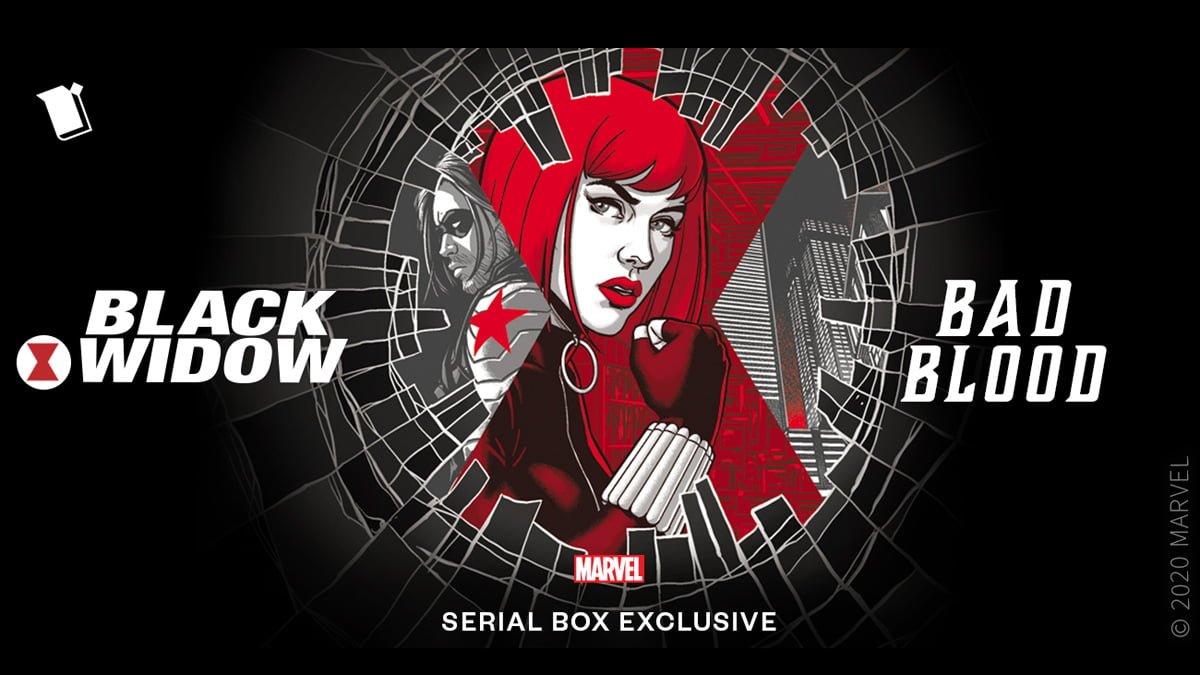A Review of the Television Series and the Comics of Star Trek: Discovery: Succession and Star Trek: Discovery: The Light of Kahless
*Minor spoilers are ahead, but if you are waffling back and forth on whether or not to watch the show and read the comics, this review may help you decide.
I blame my father for my love of Star Trek. Premiering in September of 1987, the year that I was born, Star Trek: The Next Generation became my father’s chance to share something that he loved as a kid with his own child and his future children. I have fond memories of watching Star Trek in the ’90s, much of the time while balancing dinner plates on our laps. My father would excitedly gather us in front of the television to watch this iconic science fiction series, often proclaiming that we needed to hurry up getting to the living room or else we would miss it.
Space: the final frontier. These are the voyages of the Starship Enterprise. It’s continuing mission: to explore strange new worlds, to seek out new life and new civilizations, to boldly go where no one has gone before.
Nothing epitomized my love for Star Trek more than these unforgettable words from the opening of TNG. I was young and maybe I didn’t understand the nuances of the episodes that I do now, but one thing was for certain. Those words helped form who I am as a person today. That show taught me that sometimes people are different but different is nothing to be afraid of. I learned what compassion looks like, what empathy looks like, and what compromise looks like. I learned how to be a leader from watching Captain Jean-Luc Picard, from Data, from Geordi (who I joyfully got to watch on both Reading Rainbow and TNG), and from Worf, my all-time favorite Klingon.
We all enjoyed the series so much that we waited anxiously for new episodes of Deep Space Nine and Voyager, tuning in each week to go on another amazing adventure. My favorite captain quickly became Janeway. I delighted in the antics of Quark, Rom, and Nog. And now with Star Trek: Discovery, I too can introduce my child to a glorious and complex universe where big questions and ideas are explored. I have the opportunity to share Star Trek with my child, just as my father did with me.
Star Trek: Discovery – A Frontier at War
Set 10 years before Star Trek: The Original Series, Star Trek: Discovery follows the story of First Officer Michael Burnham (played by Sonequa Martin-Green). Michael is human and was taken in by Ambassador Sarek (James Frain) and his wife Amanda Grayson (Mia Kirshner) to be raised on Vulcan after Klingons killed her parents while they were stationed on Doctari Alpha. Forever haunted by her parent’s death, Michael’s struggles with PTSD weave into her story as she simultaneously battles with her humanity, often preferring Vulcan logic over human emotion.
The crew of the USS Shenzhou is sent to investigate a damaged subspace relay on the edge of Federation space, where they come across a curious object. Micheal jets off to investigate it using a thruster suit, discovering that it is a stone ship of some kind. She soon finds herself face to face with a Klingon warrior. It has been 100 years since the Federation last had contact with the Klingons, and in this contact, Michael ends up having to use deadly force to save herself before she can be beamed back.
While the Klingons conduct a funeral for the slain warrior, Michael insists that the Shenzhou must attack first in order to win the respect of the Klingon’s to avoid war. Captain Philippa Georgiou (Michelle Yeoh) does not approve of Michael’s recommendation and instead plans to follow the orders of the Admiral and decides to wait for help to arrive. Believing that she is doing what is right to save the crew of the Shenzhou, Michael disobeys orders and takes over the ship, intending to fire on the Klingon vessel. Her plans backfire and the Federation finds itself at war.
Michael must answer for her crimes. Charged with mutiny, she accepts her fate and pleads guilty. She is stripped of rank and sentenced to life in prison. Michael’s peers disown her and blame her for starting a war with the Klingons. Six months later, while being transferred to another facility, the prison shuttlecraft becomes disabled and Michael finds herself aboard the USS Discovery, a top-secret science vessel given the responsibility of developing technologies to help the Federation win the war. After Michael is ordered by Captain Gabriel Lorca (Jason Issacs) to assist with a dangerous away mission, she is given the opportunity to join the crew of Discovery and a second chance to help right her mistakes.
What I Liked
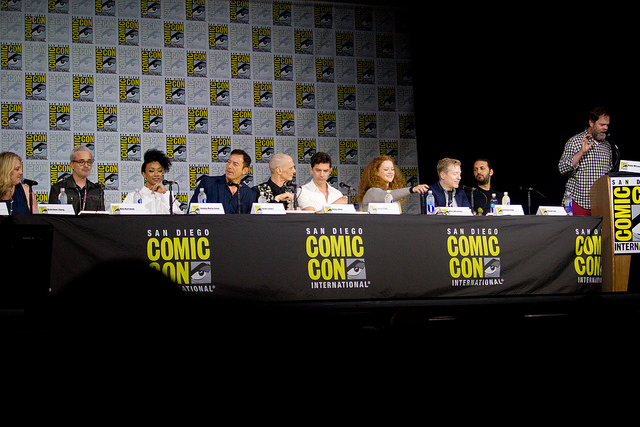
The characters are multifaceted and have room for growth. Some may disagree with me, but I see the first season of any show as an introduction. We’re just learning who these characters are and over time they will develop into something even better. The characters on Discovery drink, party, tell terrible jokes, feel hurt and betrayal, fall in love, experience heartache, and rally together despite their differences and personal objections in order to solve the problems placed before them. I am looking forward to seeing how each character comes into his or her own over time.
Star Trek: Discovery has a diverse cast of characters. Not only are people of color cast in prominent roles, the show also embraces an openly gay relationship between Doctor Hugh Culber (Wilson Cruz) and Science Officer Paul Stamets (Anthony Rapp). Within the first few minutes of the show, we see strong female characters of color take center stage in leadership roles. Star Trek has always been a universe where diversity is celebrated, and I think Discovery takes that legacy further than any series before it. It is a trend that I hope to see more of in television.
It has hints of nostalgia but is a fresh and updated take on the universe. At this point in the timeline, the Federation is still relatively new. It’s still growing, changing, and developing. The difficult subjects brought up in each episode are relevant to society today, as Star Trek has the tendency to do, no matter the series. Prejudices may undermine encounters with alien species rather than fellow humans, but these types of larger context conflicts are part of what I’ve always loved about Star Trek.
What I Didn’t Like
There’s a lack of interaction from the other characters on the bridge crew that I have personally come to expect. We catch little glances of their personalities with the quick reaction shots we are given, but that’s pretty much it. While the bridge crew characters all have names, we don’t hear from most of them. I was looking forward to getting to know the curious cyborg character, Lieutenant Commander Airiam (Sara Mitich), Ops Officer Lieutenant J.G. Joann Owosekun (Oyin Oladejo), Conn Officer Lieutenant Keyla Detmer (Emily Coutts), Tactical Officer Lieutenant Rhys (Patrick Kwok-Choon), and Communications Officer Lieutenant B.A. Bryce (Ronnie Rowe, Jr.). I know very little about any of them. This is the diverse cast that I was excited to meet. If they don’t say anything, it doesn’t feel like a true celebration of diversity. After 15 episodes they feel more like props than people. I hope this is addressed in the next season.
The fact that the Klingons have a new look doesn’t bother me. Klingons could be purple blobs and I wouldn’t care because, in my mind, the Klingons will forever look like the dreamy Worf from The Next Generation. (He was my very first TV crush.) What I am having a hard time with is that the Klingons all look very similar to each other, and aside from skin tone, it can be difficult to identify them as individuals during quick moving scenes. I miss the distinct appearances of each Klingon and the distinct personalities. Those were things that made following a story effortless, and if I wasn’t watching Discovery with the subtitles on, I would be pretty confused about who’s who.
It’s only my personal opinion, but I believe that the season should have ended with episode 13. From a storytelling standpoint, leaving those questions to be answered in the next season would have made for a more exciting season finale and a more effective cliffhanger. Episodes 14 and 15 would have served well as the launch of season 2. They were set up well to be a beginning. I don’t see them as a great ending, despite having tied up a whole slew of loose ends. I feel like that could have waited for the next season.
Bits of Controversy
I’m never surprised that there is controversy from existing fans whenever a long-running series does something new and different. Whenever there is a switch-up, some people are going to feel disappointed. But after looking around the message boards, I am a bit taken aback by the amount of hatred that I am reading. It’s not the poor reviews of the show. It’s the racism, misogyny, and intolerant comments that put me on edge. As someone who would personally love to see the Star Trek way of life become a reality, it boggles my mind that these hateful comments are coming from people who love a universe built by a man who dreamed of a better world—a utopian, diverse, and tolerant society spreading a message of hope.
Star Trek: Discovery: The Light of Kahless

This is a four issue comic series put out by IDW Publishing. (Also available in trade paperback.)
Mike Johnson (Author)
Kirsten Beyer (Author)
Tony Shasteen (Artist)
J.D. Mettler (Colorist)
George Caltsoudas (Cover Artist)
It focused on the character T’Kuvma, filling in the huge blanks not covered in the television series about how his life journey sparked a revolution amongst the Klingons. We read this story almost like a fairytale. It begins after the Battle of Binary Stars ended. L’Rell begins telling Voq about how T’Kuvma did not start off as a legend, but as an average kid on Qo’nos, getting beat up by his brother and his brother’s friends, just like anyone else.
T’Kuvma escapes his torment by rushing into the forest where the others won’t follow him. He stumbles across an ancient ship made of metal and carved stone. Inside is his sister, J’ula. T’Kuvma learns of his family’s ancient past—a long forgotten house with a long forgotten seat on the high council. As he learned about where his family came from, he promised to keep his knowledge a secret.
T’Kuvma is eventually sent to Boreth to study and learn the ways of Kahless. He finds physical and inner strength, compassion for his people, and the voice of leadership inside of him. The same voice and the same strength that convince him to move forward and bring his people together.
This whole comic series humanizes the Klingon in a way that we didn’t get in the television series. My favorite characters are the ones that are human, flawed, and real. In the show, we see a lot of anger, violence, and brutality. The Klingons were an easy to despise villain, but they felt a bit flat overall. Fans of the Klingon know that there is a wide rich culture to be explored and we get that in the comics. We see the Klingons as people that we can connect with, people who have individuals wants, needs, desires, and aspirations.
J.D. Mettler does a great job of using color to evoke emotion from panel to panel. Artist Tony Shasteen was able to fix a problem that I had with watching the Klingons on the show. He made them distinctive. They look the way they are supposed to look, but he found a way through posturing and line to make the characters look even more Klingon than I think was achieved in the show. The drawn Klingons move naturally and have more variation in their facial expressions. They are drawn with personalities. I really enjoyed getting to know them through this art.
Star Trek: Discovery: Succession
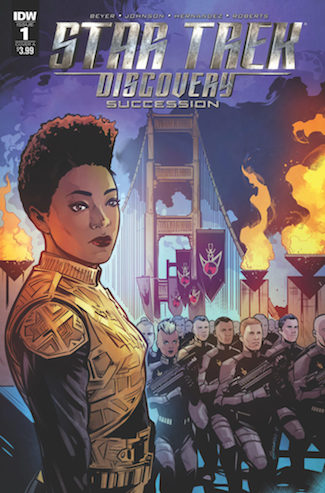
This was also a four-issue series put out by IDW Publishing.
Mike Johnson (Author)
Kirsten Beyer (Author)
Angel Hernandez (Artist, Cover Artist)
Mark Roberts (Colorist)
In this series, we’re taken back to the mirror universe and get to explore more about who the imperialistic humans are. It is believed that the emperor died when the Imperial Flagship was destroyed. The resistance has failed and the next heir in line, Prince Alexander, wastes no time in taking up the crown. His first order of business is an act of genocide. Anyone not human does not deserve to survive.
It’s an interesting twist to read about the other side. Full of betrayal, backstabbing, and xenophobia, the mirror universe seems like a difficult place to live. It’s almost like everyone is in a constant battle for survival. It’s an entire comic series that answers the question: What if your beloved Star Trek characters were diabolical villains? I was especially tickled when I saw the character of Harcourt Fenton Mudd making an unexpected appearance giving much needed humanitarian aid to refugees. This whole storyline is something that I would happily read more of.
Angel Hernandez is spot on with his character work. Each character looks just like the equivalent actor in the show. I’m loving his bold line style. Colorist Mark Roberts brings us into a brighter Mirror Universe than in the show, and it works. It works very well. It reinforces the “what if” narrative and I actually like it better that way.
Star Trek: Discovery Is Taking Fans Forward
Ultimately, I liked the show. Sure, it’s different. It looks different, sounds different, the Klingons are different, the cinematography is different… but if there is one thing that I have learned about creative works it is that choosing to remain stagnant serves no one. Art is meant to move, change, evolve, and test the boundaries. This is something that I see Discovery moving towards, and that makes me excited to see what happens next.
As for the comics, they make a great addition to the storyline. I loved learning more about the Klingons and The Light of Kahless really pushes that humanizing aspect of an alien race that we only saw one facet of. Succession brought an amazing “what if” story to life. I’d happily recommend watching the show and reading the comics. Ultimately, I think we’ll find that they are a great addition to an already amazing universe that is now growing and changing as we too grow and change.
